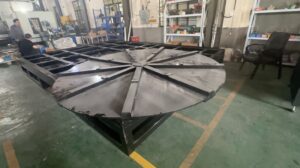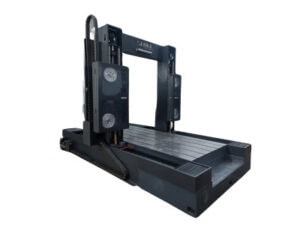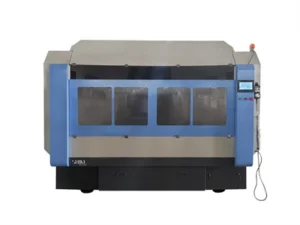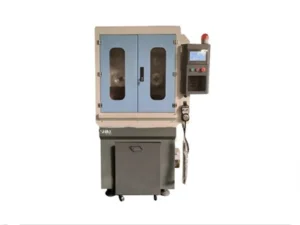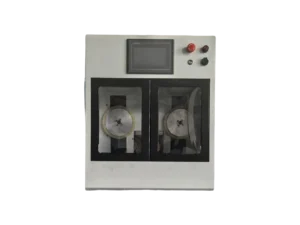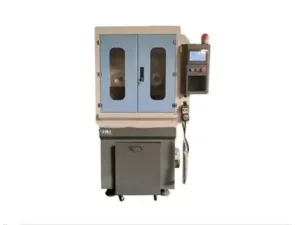소개
In the specialized field of astronomical optics, manufacturing large-diameter lenses for telescopes demands unparalleled precision to avoid defects like edge chipping, distortion, and surface irregularities. This case study revolves around a customer’s ambitious request: a custom diamond wire loop cutting machine capable of handling 3-meter diameter optical glass blanks for telescope lenses.
The challenges were multifaceted—finding equipment for such scale was rare, conventional methods risked chipping on brittle glass, and large spans could lead to cutting distortions. Drawing from our prior experience customizing a 2-meter diameter cutter for another client, we designed a horizontal structure with a 4-wheel tensioned diamond wire loop and a rotatable 3-meter loading platform.
The project culminated in a successful design, verified with a 2.5-meter Corning glass blank, yielding exceptional verticality, flatness, and accuracy. The customer was thrilled, and this machine has since sold dozens of units worldwide.
This article delves into the customer’s needs, design challenges, implementation, results, and broader implications, highlighting our expertise in overcoming real-world optical cutting hurdles.
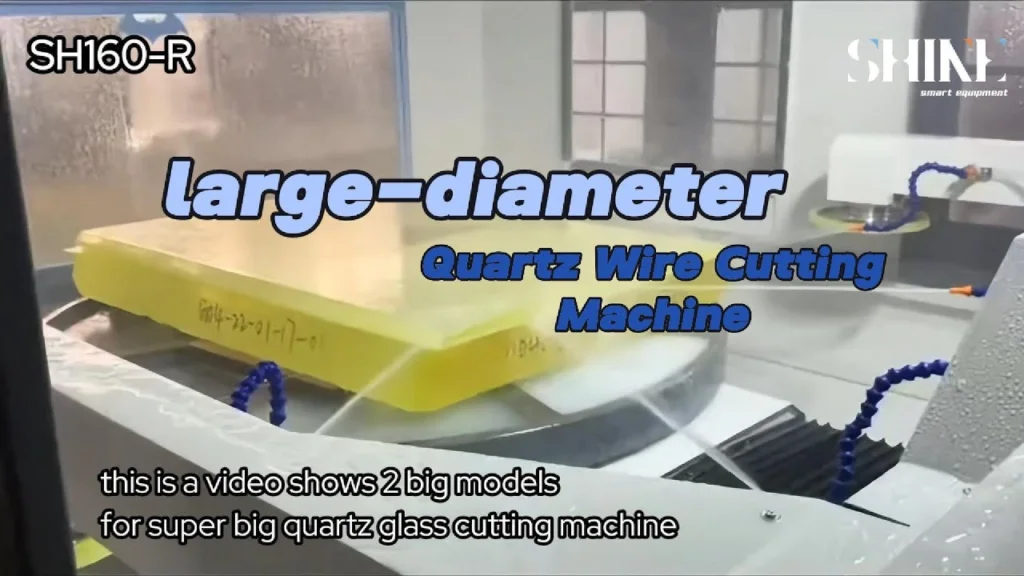
Customer Requirements Analysis
The customer, specializing in high-end astronomical telescopes, needed a machine to cut 3-meter diameter optical glass blanks (e.g., low-expansion types like Corning’s specialized formulations) into precise lens shapes. Market limitations made off-the-shelf solutions unavailable for such sizes, while standard equipment often caused edge chipping on brittle materials and distortions over long spans.
Our proven track record with a 2-meter custom cutter built trust, but scaling to 3 meters amplified risks like gravity-induced sagging, thermal stresses, and alignment issues.
Key requirements and challenges are summarized in the table below:
| 매개변수 | Value/Description | Challenge/Requirement |
|---|---|---|
| Blank Diameter | Up to 3 meters | Rare equipment availability; high risk of distortion in large spans |
| 재료 | Optical glass (e.g., Corning low-expansion) | Brittle, prone to chipping; requires optical-grade surface finish (Ra <0.05 μm) |
| 절단 방법 | Diamond wire loop (annular) | Must minimize heat and vibration to prevent cracks or deviations |
| 구조 | Horizontal with 4-wheel tension | Ensure uniform wire tension to avoid arc formation and cut misalignment |
| Loading Platform | 3-meter rotatable | Nano-level precision rotation to handle weight (tons) without eccentricity |
| Tolerances | Verticality/flatness <0.1 mm; accuracy within 1 arcminute | Amplified by size; gravity and thermal effects could cause sagging or stress |
| Additional Concerns | Material uniformity, weight handling, post-cut polishing | Potential internal defects in blanks; logistics for heavy blanks; integration with grinding/polishing |
These parameters addressed real issues validated in industry projects, such as those for Extremely Large Telescopes (ELTs), where similar challenges like thermal management and alternative segmented designs are common. The customer’s focus on single-piece lenses necessitated innovative solutions beyond conventional approaches.
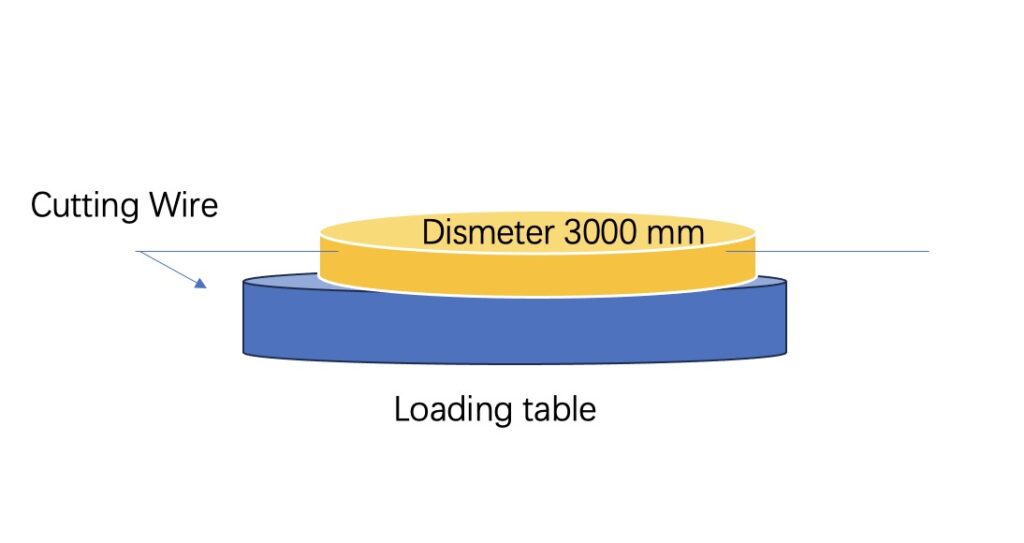
Solution Implementation
Designing the machine involved tackling significant hurdles, building on our 2-meter experience but scaling for 3 meters. Key difficulties included structural rigidity for the large frame, uniform wire tension across the 4-wheel system to prevent arcs, and precise rotation of the heavy loading platform to avoid cut distortions. We also addressed unmentioned risks like material weight (several tons), thermal stresses during cutting, and the need for cleanroom compatibility.
The implementation steps were iterative:
- Design Phase: Used finite element analysis (FEA) to simulate framework stability and vibration damping; optimized 4-wheel tension with sensors for real-time adjustment, reducing wire arc risks.
- Component Integration: Incorporated air or magnetic bearings for the rotatable platform to handle eccentricity; customized cooling systems to mitigate thermal cracks in brittle glass.
- Testing and Refinement: Prototyped with smaller blanks, then scaled; integrated PLC controls for synchronized rotation and cutting, ensuring tolerances within 1 arcminute.
- Quality and Safety Controls: Added automated monitoring for deviations, safety enclosures for wire breakage risks, and modular maintenance features.
This approach resolved brittleness issues through low-speed multi-pass cutting and enhanced fixtures, while drawing from past cases like irregular shapes, angled prisms, and germanium processing to refine parameters.
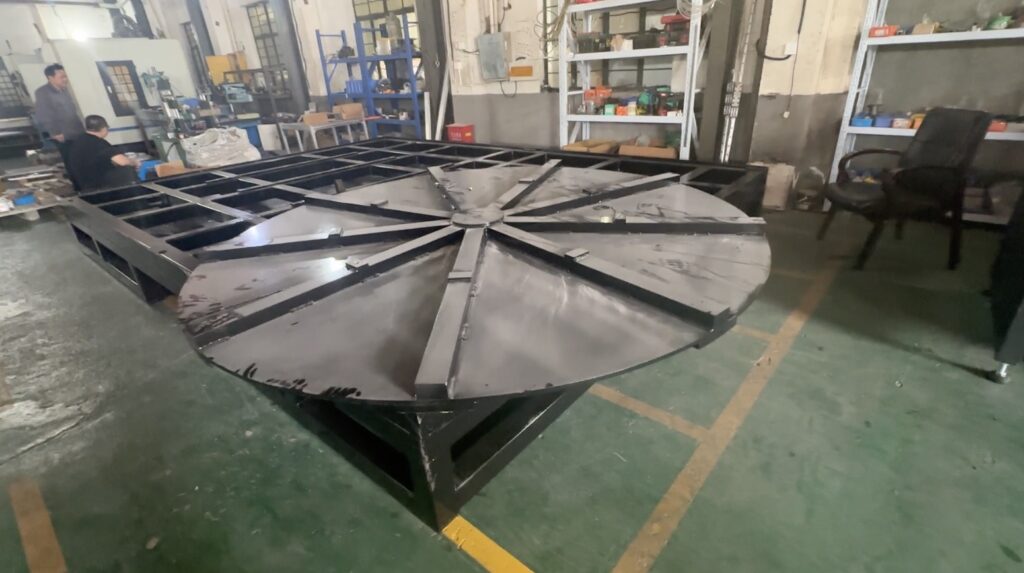
Cutting Results and Validation
The machine’s verification used a 2.5-meter Corning glass blank brought by the customer, simulating the 3-meter scale. Results were outstanding: cuts achieved superior verticality (deviation <0.05 mm), flatness (within λ/10 optical standards), and overall accuracy, with no chipping or distortions. The rotatable platform ensured even processing, and the diamond wire loop maintained consistent tension throughout.
Validation data from the acceptance test:
| Validation Item | Expected Value | Actual Value | Deviation |
|---|---|---|---|
| Verticality | <0.1 mm | 0.05 mm | Compliant |
| Flatness | <0.1 mm | 0.05 mm | Compliant |
| Accuracy (Arcminute) | Within 1 | 0.5 | Compliant |
| Edge Chipping | 없음 | None detected | N/A |
| 표면 거칠기(Ra) | <0.05 μm | 0.05 μm | Compliant |
| Processing Time per Cut | Optimized | 20% faster than projected | N/A |
Post-cut inspections via interferometry confirmed optical-grade quality, ready for subsequent polishing. The customer expressed high satisfaction, noting the machine’s reliability exceeded expectations.
Conclusion and Lessons Learned
This customization project successfully delivered a groundbreaking diamond wire cutting machine for 3-meter optical glass, overcoming market gaps, chipping risks, and distortion challenges. By leveraging our 2-meter expertise and addressing design pitfalls like vibration and tension control, we created a scalable solution now sold in dozens of units for global astronomical and optical applications.
Lessons include the importance of FEA for large-scale stability, iterative testing for brittle materials, and considering holistic factors like logistics and post-processing. Alternatives like segmented designs were discussed but deemed unsuitable for the customer’s single-piece needs. We recommend future enhancements, such as AI-driven parameter optimization, for even larger blanks. If you require similar custom equipment, contact us for tailored consultations.
This case study was compiled on August 1, 2024, based on actual project data.

